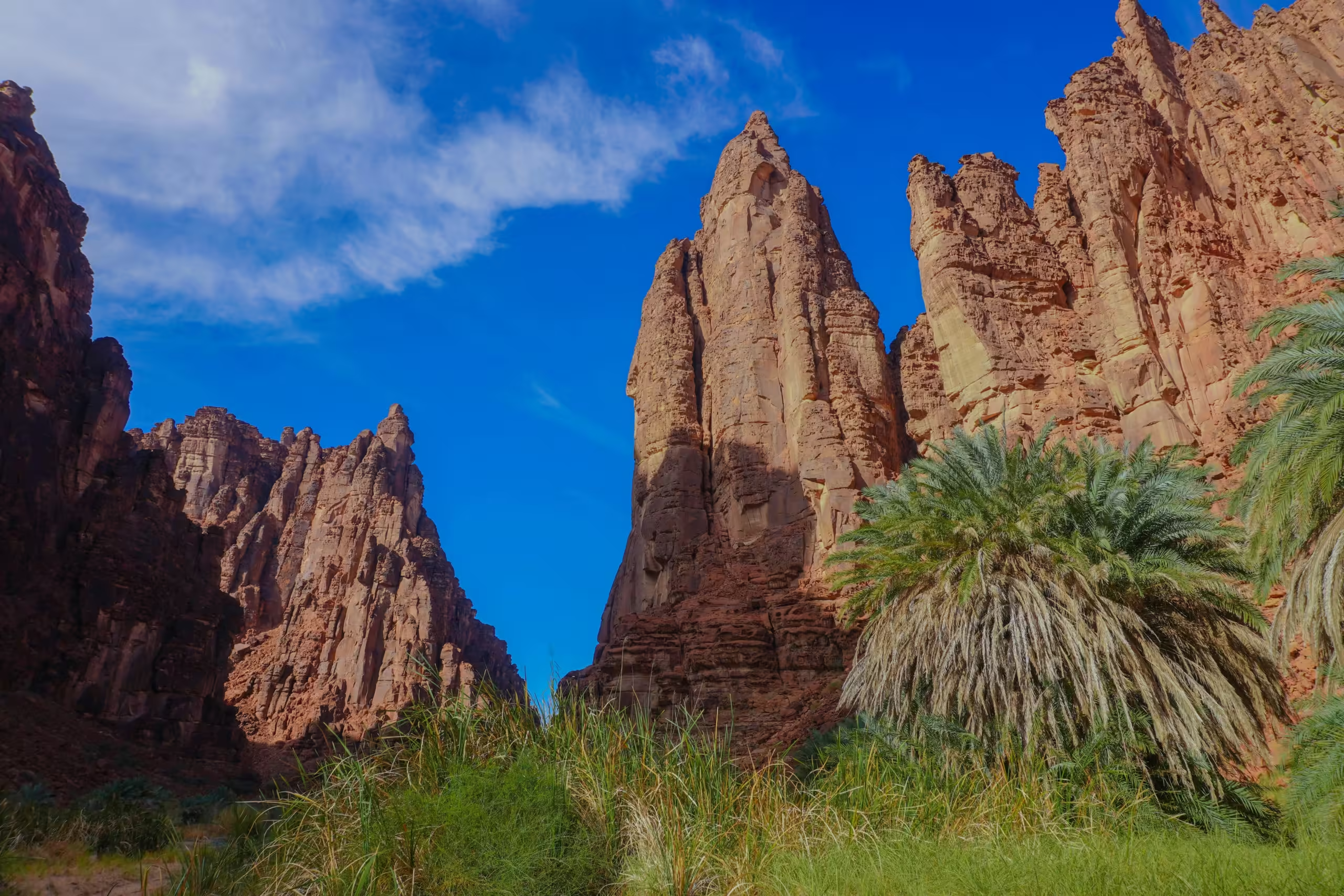Tabuk in Saudi Arabia
Visit Tabuk in Saudi Arabia
Tabuk, located in the north-western region of Saudi Arabia, is a city that blends historical significance, natural beauty, and modern development. Close to the Jordanian border, it has long been a crossroads for travellers, traders, and pilgrims. Today, Tabuk offers visitors a unique opportunity to explore Saudi Arabia’s rich past while witnessing its ambitious plans for the future.
A Journey Through History
Tabuk’s history stretches back thousands of years, with evidence of human settlement from pre-Islamic times. Its strategic position along ancient trade routes made it a vital stop for merchants transporting goods such as frankincense and myrrh from southern Arabia to the Mediterranean. Later, it became an important waypoint for pilgrims travelling to Mecca, particularly those coming from the Levant and Egypt.
Historic landmarks still reflect this legacy. The Well of Moses, linked to the Prophet Moses by tradition, remains a site of cultural and spiritual interest. Another highlight is Tabuk Castle, built during the Ottoman era in 1559 and later renovated. Originally serving as a fort and resting place for pilgrims, the castle’s rooms, prayer spaces, and watchtowers provide a fascinating glimpse into Tabuk’s role as both a military and religious hub.
Natural Wonders Around Tabuk
Tabuk’s landscapes challenge the common perception of Saudi Arabia as endless desert. The region features lush valleys, rugged mountains, and occasional winter snowfall. Jebel Al-Lawz, known as the Mountain of Almonds, rises over 2,500 metres and attracts hikers eager to experience its snow-dusted peaks and panoramic views.
Another natural treasure is Wadi Al-Disah, often compared to the dramatic canyons of Utah. Towering red sandstone cliffs, palm groves, and green vegetation create a striking contrast against the desert backdrop. Organised tours from Tabuk make this valley accessible for visitors seeking hiking, photography, or simply a peaceful escape into nature.
The nearby Gulf of Aqaba adds a coastal dimension to Tabuk’s appeal. Its pristine beaches and clear waters invite travellers to enjoy snorkelling, diving, and relaxation. Spots such as Sharma and Neom Bay are ideal for marine enthusiasts, offering vibrant coral reefs and diverse aquatic life.
The Neom Project: A Glimpse of the Future
Tabuk is gaining global attention thanks to the Neom project, a cornerstone of Saudi Arabia’s Vision 2030 initiative. This ambitious development aims to create a futuristic mega-city along the Red Sea, powered by renewable energy and designed for sustainability.
One of Neom’s most talked-about features is The Line, a 170-kilometre linear city planned without cars or streets, operating on zero-carbon principles. This bold concept reflects Saudi Arabia’s commitment to redefining urban living and diversifying its economy beyond oil. Neom promises advanced infrastructure, job opportunities, and a surge in international tourism and investment.
While the project has sparked debate, it undeniably positions Tabuk as a focal point for innovation and global interest.
Cultural Richness and Local Traditions
Tabuk offers a vibrant cultural experience, blending Bedouin heritage with modern influences. Visitors will encounter the renowned Saudi hospitality, where serving Arabic coffee (gahwa) and dates symbolises warmth and generosity. Traditional crafts such as Sadu weaving, a textile art producing intricate geometric patterns, remain popular and make meaningful souvenirs.
Local markets showcase handmade goods and regional delicacies, providing insight into the artistry and culinary traditions of the area. These cultural encounters add depth to any visit, allowing travellers to appreciate Tabuk beyond its scenic and historical attractions.
Climate and Best Time to Visit
Tabuk experiences a desert climate with hot summers and mild winters. Summer temperatures often exceed 40°C, while winter offers cooler conditions ideal for outdoor exploration. Occasional rainfall brings a refreshing change to the arid landscape. For the most comfortable experience, plan your trip between October and March, when the weather is pleasant and attractions like Wadi Al-Disah and Jebel Al-Lawz are at their best.
Travelling to Tabuk
Reaching Tabuk is straightforward thanks to Tabuk Regional Airport, which connects to major Saudi cities and select international destinations. Upon arrival, visitors can rent cars or use taxis to explore the city and the surrounding areas. Recent infrastructure improvements have enhanced accessibility, making Tabuk increasingly visitor-friendly.
Accommodation and Dining
Tabuk offers a growing range of accommodation options, from budget-friendly hotels to upscale establishments. As Neom develops, the availability of luxury resorts and high-end facilities is expected to increase significantly.
Dining in Tabuk is a culinary journey through traditional Saudi flavours and international cuisine. Signature dishes such as kabsa, a fragrant rice and meat dish, are widely available, alongside Middle Eastern favourites and global options. Sampling local specialities is highly recommended for an authentic taste of the region.
Why Tabuk Deserves a Place on Your Itinerary
Tabuk is a city in transition, where ancient history meets bold modern ambitions. Its natural wonders, cultural richness, and strategic role in Saudi Arabia’s future make it a destination worth exploring. From Ottoman forts and serene valleys to cutting-edge projects and idyllic Red Sea beaches, Tabuk offers a diverse and rewarding experience for travellers seeking something beyond the ordinary.
Highlights of Tabuk:
- Historic landmarks such as Tabuk Castle and the Well of Moses.
- Scenic attractions including Jebel Al-Lawz and Wadi Al-Disah.
- Coastal beauty along the Gulf of Aqaba.
- Cultural experiences featuring traditional crafts and hospitality.
- Future-focused developments through the Neom project.
Tabuk in Saudi Arabia is a gateway to history, nature, and innovation. Whether you are drawn by its heritage, intrigued by its landscapes, or curious about its role in shaping the future, Tabuk promises an unforgettable journey.

